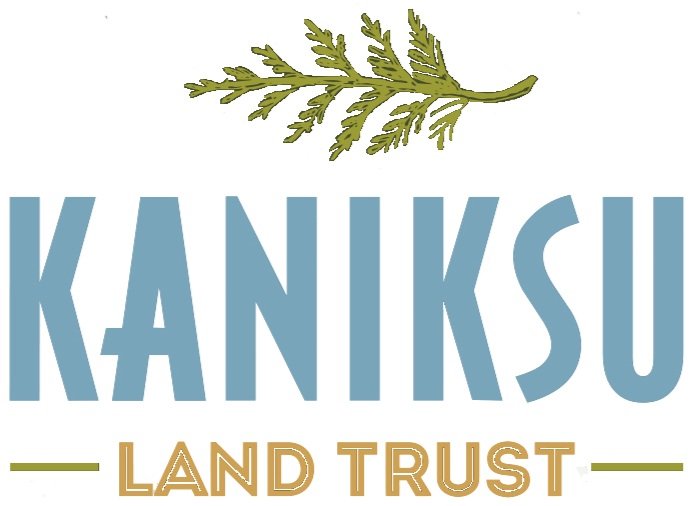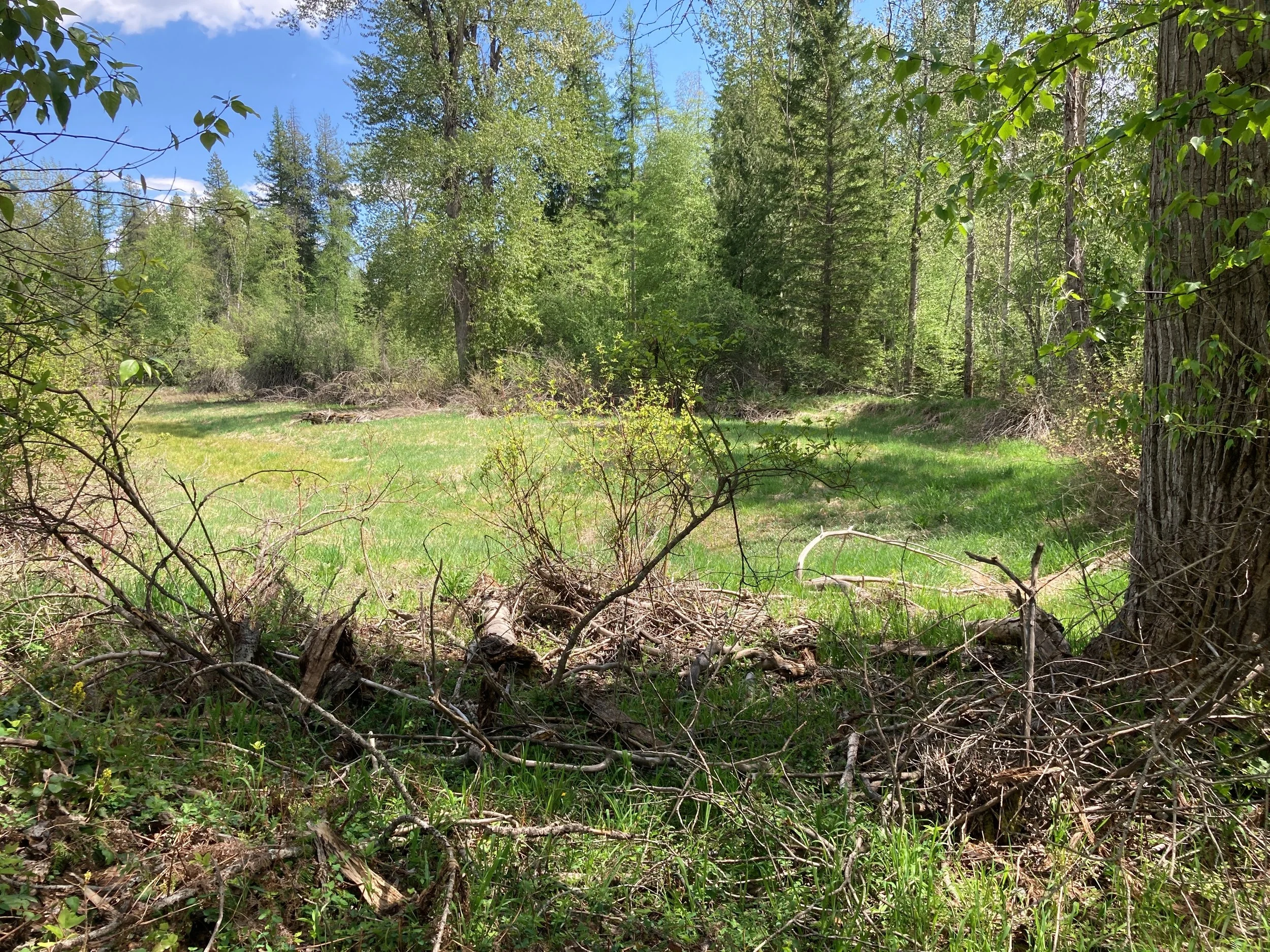A conservation story as told by the landowner.
I have practiced a "Back to Earth" form of conservation since I was 16. I read authors like Emerson and Thoreau, John Muir, the Neerings, of course, Rachel Carson, Masinobu Fukuoka, etc. I had been a woods child and felt more at home enveloped by nature. I have always believed that humankind can live in balance with nature and respect the way most indigenous cultures have succeeded in doing just that. We were fortunate enough to find North Idaho when property was affordable, even on our salaries and we purchased our place. The intention was to live in harmony with nature, which was more abundant then. What an opportunity and joy it has been to watch it evolve and be.
I think that over time, a place becomes special. We form a relationship and become synchronized with its rhythms. If we are aware and awake, we notice how amazing a place surrounds us. I have held swallows and and a pygmy owl. The deer come in to be fed apples, and the moose camp outside of the house when in the neighborhood. I believe I could have formed a relationship with many natural places, but this property is where I am. We care for it and it cares for us. Unfortunately, our neighbors don't share that vision and have changed the nature of the land.
We lived in a rural area in the Delaware River National Park area in the Eastern United States. It had been discovered by New Yorkers who wanted to gentrify it. The taxes were increasing and our sleeping little "four corner" town with its tiny grocery store, Post Office, surveyor's office luncheonette, and bank was slated to change. We looked in New York State, New Mexico, nearly bought a farm in Maine. Someone suggested we look at the Northwest. We literally dangled a needle over a map and landed in Northern Idaho. We spent four days scouring the area of Bonner and Boundary Counties. When we saw this place, we decided it was the one.
In the spring we have turtles, various species of frogs. Before our water was diverted, we had beaver, muskrat and heron, several species of duck and Canada geese. There are toads, black and ribbon snakes, salamanders. We will see many types of butterflies and moths, dragonflies honey, mason, bumble, and orchard bees as well as yellow jackets and other wasps. The assortment of insects is varied depending on the year. We have identified golden and bald eagles, pileated, red headed, flicker woodpeckers, blue jays, occasionally gold finch and blue jays, western cardinals, black and red tailed hawks, wrens, chik-a-dees, sparrows, humming birds, crows... I am certain I have left some out. We have white tailed deer, moose, elk, cougar, coyote, snow shoe hare, three types of squirrels, chipmunks, and on a rare occasion we have seen fox.
Before our neighbor terra formed the wetlands, we had a pond/creek network on which our children and I kayaked and ice skated. I would put on my skates, take the snow shovel and shovel the snow off of the ice. No Zamboni machine, here. My grandchildren and I built fairy houses in particular tree groves. We would check on them as the seasons changed. There is so much inspiration and room for imagination.
What is surprising is how different everything is with each unfolding season and year. The changing weather and climate has altered what edible and medicinal wild plants we harvest. We know that nothing can be taken for granted, not even the species of anything surviving. We can wake up to find a large toad on the front walkway or a turtle trying to dig to lay in her eggs in the driveway. We chase the flickers off of the house to prevent them from pecking through the roof or nesting in the house walls. The deer come almost to the door to share the apple harvest and hay if the snow gets particularly deep. Three elk cows walked into the machine shed to help themselves to a bale of hay stored there. Being set in from the road means more work and maintenance, but we prefer it.
Our dream and intention is that the property remain in the family. I love to imagine my great grandchildren climbing and exploring where our children adventured. It is a resource for human and animal species alike, an outdoor experience that can’t be duplicated in a classroom.
We still conduct select cut logging with a logger who understands the relationship that nature and humankind can create. We still garden and raise vegetables and flowers. We have enough space for recreation and projects. Our relationship with nature is one of interdependence that helps to create a higher state of well being. I have no fear of the animals that share our property. We don’t tempt bears with open containers of food or garbage. Everyone learns to track and identify scat and claw marks so that we know with whom we are sharing the property. When a mother bear walks through with her cubs we yield the right of way.
Many cultures set aside space and time for people to immerse themselves in nature as a means of reducing distress and anxiety. We all need to make a living and support ourselves. But conservation requires that we see into the future and beyond making a reasonable profit so that we sustain this beautiful environment of which we are stewards.




